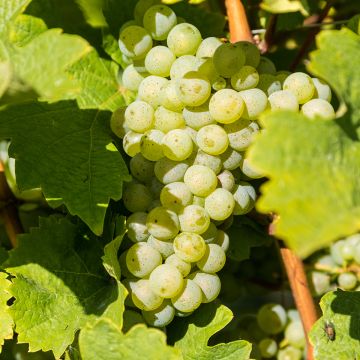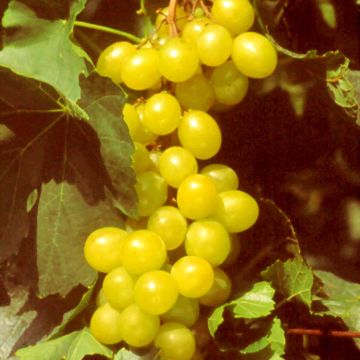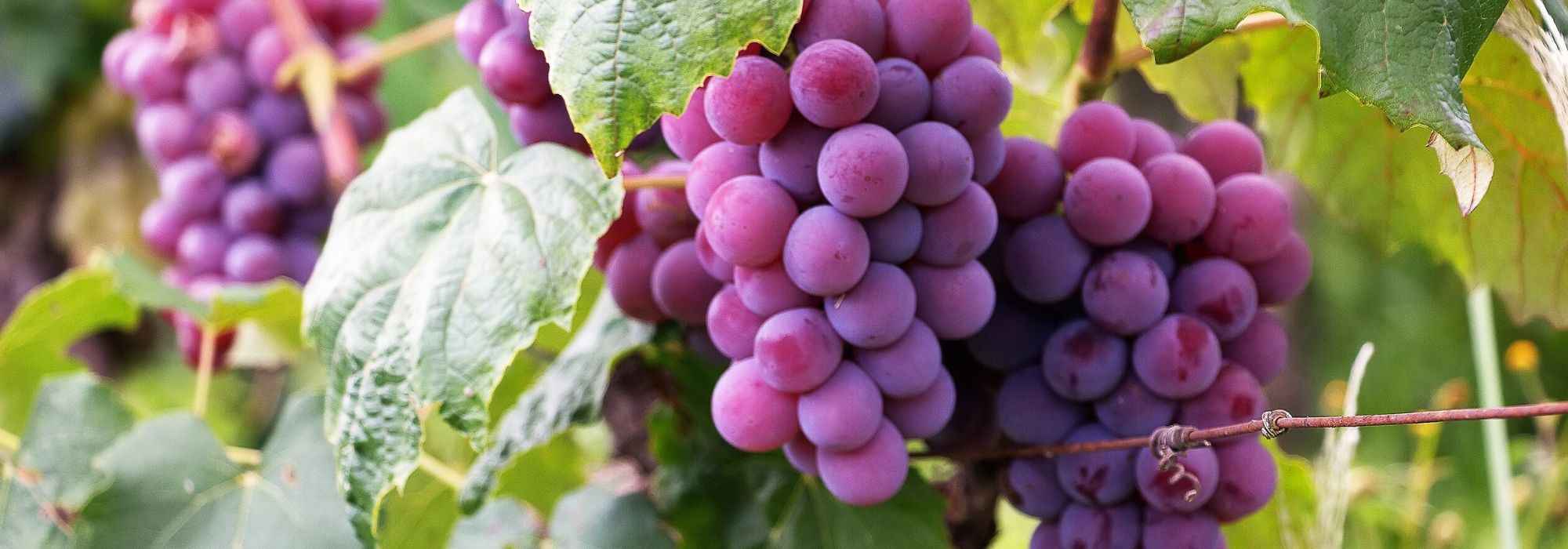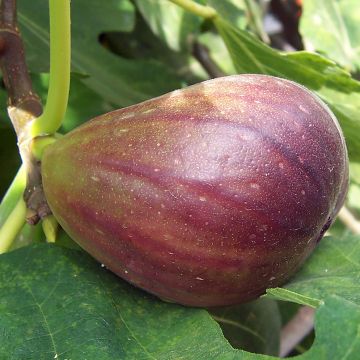

Vitis vinifera Perlette - Grape Vine
Vitis vinifera Perlette - Grape Vine
Vitis vinifera Perlette®
Common Grape Vine, European Grape, Wine Grape
Always in very good health. This grapevine seems well established.
Alain, 15/10/2025
Special offer!
Receive a €20 voucher for any order over €90 (excluding delivery costs, credit notes, and plastic-free options)!
1- Add your favorite plants to your cart.
2- Once you have reached €90, confirm your order (you can even choose the delivery date!).
3- As soon as your order is shipped, you will receive an email containing your voucher code, valid for 3 months (90 days).
Your voucher is unique and can only be used once, for any order with a minimum value of €20, excluding delivery costs.
Can be combined with other current offers, non-divisible and non-refundable.
Home or relay delivery (depending on size and destination)
Schedule delivery date,
and select date in basket
This plant carries a 6 months recovery warranty
More information
We guarantee the quality of our plants for a full growing cycle, and will replace at our expense any plant that fails to recover under normal climatic and planting conditions.

Description
The 'Perlette' vine is a variety of medium vigour. It produces medium to large clusters, often winged, and quite compact. The berries are like pearls, hence its name. Their moderately thick skin is white to golden yellow. The flesh is firm, with a slight Muscat aroma, and almost seedless. Harvest takes place in October. The 'Perlette' vine is somewhat susceptible to diseases. It is the variety cultivated in Morocco for the production of raisins.
The wine grape vine (Vitis vinifera) used to grow wild over 5000 years ago. Its introduction to France for cultivation was done by the Romans. Many hybrids have been developed to vary colours, flavours and uses. The 'Perlette' vine is a selected variety in the United States, in California, at the University of Davis, by Professor Harold P. Olmo, in 1936. It results from a cross-breeding: 'Queen of the vines' x 'Sultamine'.
A vigorous climbing shrub, the 'Perlette' vine can reach up to 5m (16ft). Its final shape will depend on the pruning practised. The vine clings to its support (trellis, espalier) thanks to its tendrils and likes sunny situations. It has a semi-erect to horizontal habit. It is recommended to train it on wire and to trellis it well. A long pruning is recommended. It is indifferent to soil type, not very demanding, and even prefers a dry and rocky soil. Its finely cut foliage, deep green in summer, sees the edges of its leaves turn red in autumn. Its flowering in clusters occurs in May, offering very small white-pink flowers. Its grapes in medium clusters ripen in October, depending on the regions. The berries are like pearls, hence its name. Their moderately thick skin is white to golden yellow. The flesh is firm, with a slight Muscat aroma, and almost seedless.
Grapes are consumed as table fruit, fresh, but also in jam, jelly, fruit juice, pastries, and of course, after vinification, as wine.
Vitis vinifera Perlette - Grape Vine in pictures
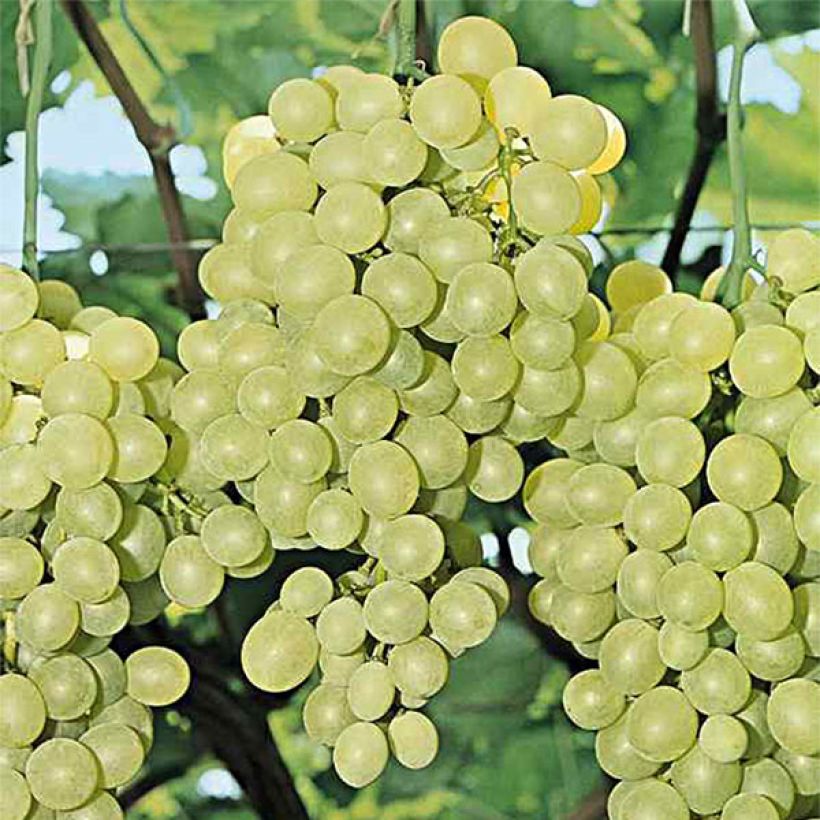

Plant habit
Fruit
Flowering
Foliage
Botanical data
Vitis
vinifera
Perlette®
Vitaceae
Common Grape Vine, European Grape, Wine Grape
Cultivar or hybrid
Other Grapevines
View all →Planting and care
Since the ravages of phylloxera in the late 19th century, grape vines are obligatorily grafted onto different rootstocks, resistant to this disease and adapted to different types of soil. These rootstocks come from American varieties. Plant the 'Perlette' vine in the autumn, in a deep, well-drained soil—even stony, arid, poor and chalky substrates—in a well-exposed site, sheltered from strong winds. Incorporate 3 or 4 handfuls of fertiliser for fruit trees and 2 kg of composted manure for each plant into the soil. The roots should not come into contact with the manure. After planting, prune above 2 large buds to encourage the growth of two branches. Keep the most vigorous one, and tie it to a stake. The training pruning will follow.
The vine does not require regular fertiliser application for good yield. On the contrary; enrich the soil with potash slag, crushed horn or iron chelate, only every 2-3 years.
Planting period
Intended location
Care
Planting & care advice
-
, onOrder confirmed
Reply from on Promesse de fleurs
Similar products
Haven't found what you were looking for?
Hardiness is the lowest winter temperature a plant can endure without suffering serious damage or even dying. However, hardiness is affected by location (a sheltered area, such as a patio), protection (winter cover) and soil type (hardiness is improved by well-drained soil).

Photo Sharing Terms & Conditions
In order to encourage gardeners to interact and share their experiences, Promesse de fleurs offers various media enabling content to be uploaded onto its Site - in particular via the ‘Photo sharing’ module.
The User agrees to refrain from:
- Posting any content that is illegal, prejudicial, insulting, racist, inciteful to hatred, revisionist, contrary to public decency, that infringes on privacy or on the privacy rights of third parties, in particular the publicity rights of persons and goods, intellectual property rights, or the right to privacy.
- Submitting content on behalf of a third party;
- Impersonate the identity of a third party and/or publish any personal information about a third party;
In general, the User undertakes to refrain from any unethical behaviour.
All Content (in particular text, comments, files, images, photos, videos, creative works, etc.), which may be subject to property or intellectual property rights, image or other private rights, shall remain the property of the User, subject to the limited rights granted by the terms of the licence granted by Promesse de fleurs as stated below. Users are at liberty to publish or not to publish such Content on the Site, notably via the ‘Photo Sharing’ facility, and accept that this Content shall be made public and freely accessible, notably on the Internet.
Users further acknowledge, undertake to have ,and guarantee that they hold all necessary rights and permissions to publish such material on the Site, in particular with regard to the legislation in force pertaining to any privacy, property, intellectual property, image, or contractual rights, or rights of any other nature. By publishing such Content on the Site, Users acknowledge accepting full liability as publishers of the Content within the meaning of the law, and grant Promesse de fleurs, free of charge, an inclusive, worldwide licence for the said Content for the entire duration of its publication, including all reproduction, representation, up/downloading, displaying, performing, transmission, and storage rights.
Users also grant permission for their name to be linked to the Content and accept that this link may not always be made available.
By engaging in posting material, Users consent to their Content becoming automatically accessible on the Internet, in particular on other sites and/or blogs and/or web pages of the Promesse de fleurs site, including in particular social pages and the Promesse de fleurs catalogue.
Users may secure the removal of entrusted content free of charge by issuing a simple request via our contact form.
The flowering period indicated on our website applies to countries and regions located in USDA zone 8 (France, the United Kingdom, Ireland, the Netherlands, etc.)
It will vary according to where you live:
- In zones 9 to 10 (Italy, Spain, Greece, etc.), flowering will occur about 2 to 4 weeks earlier.
- In zones 6 to 7 (Germany, Poland, Slovenia, and lower mountainous regions), flowering will be delayed by 2 to 3 weeks.
- In zone 5 (Central Europe, Scandinavia), blooming will be delayed by 3 to 5 weeks.
In temperate climates, pruning of spring-flowering shrubs (forsythia, spireas, etc.) should be done just after flowering.
Pruning of summer-flowering shrubs (Indian Lilac, Perovskia, etc.) can be done in winter or spring.
In cold regions as well as with frost-sensitive plants, avoid pruning too early when severe frosts may still occur.
The planting period indicated on our website applies to countries and regions located in USDA zone 8 (France, United Kingdom, Ireland, Netherlands).
It will vary according to where you live:
- In Mediterranean zones (Marseille, Madrid, Milan, etc.), autumn and winter are the best planting periods.
- In continental zones (Strasbourg, Munich, Vienna, etc.), delay planting by 2 to 3 weeks in spring and bring it forward by 2 to 4 weeks in autumn.
- In mountainous regions (the Alps, Pyrenees, Carpathians, etc.), it is best to plant in late spring (May-June) or late summer (August-September).
The harvesting period indicated on our website applies to countries and regions in USDA zone 8 (France, England, Ireland, the Netherlands).
In colder areas (Scandinavia, Poland, Austria...) fruit and vegetable harvests are likely to be delayed by 3-4 weeks.
In warmer areas (Italy, Spain, Greece, etc.), harvesting will probably take place earlier, depending on weather conditions.
The sowing periods indicated on our website apply to countries and regions within USDA Zone 8 (France, UK, Ireland, Netherlands).
In colder areas (Scandinavia, Poland, Austria...), delay any outdoor sowing by 3-4 weeks, or sow under glass.
In warmer climes (Italy, Spain, Greece, etc.), bring outdoor sowing forward by a few weeks.

































